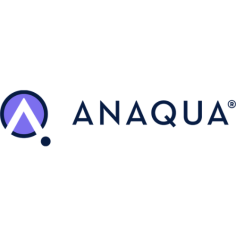- Timesheet software
This is a digital version of the traditional paper timesheet system. It eliminates physical paperwork and if integrated with other company software, it also eliminates double entry. The timesheet is organized to include all the crucial fields required for invoicing the work performed to expedite the invoicing process. Basic timesheet apps might just provide a structure for input while more sophisticated apps will help with recall/syncing of matter IDs, narratives, charges codes and other inputs. - Digital start-stop timers
These timers replace the manual ones that used to be prevalent on desktops. Individual timers can usually be set up all at once at the start of the day, or as you work, so that you can switch between tasks without having to reset the timer. The drawback is that this is still a very manual process that relies fully on the user to remember to activate/stop the timer running. This method seems simplest, and is often well accepted by attorneys in practice, but has been proven to cause the greatest room for error. - Automatic, or passive, time-tracking
These types of time tracking systems will automatically record time spent on tasks or projects. Some work as plugins to specific applications and create accurate logs of the users activity in those applications. These automated solutions don’t rely on user intervention to create logs so are able to provide a very accurate account of a user’s focus and activity. To ensure they are most effective, users should check that they will work across all the key programs/applications that they typically use in their daily work. To assess the fit for your use case, it’s also a good idea to check how the time data is presented and exported to ensure it will work into your law firms operations easily. - User activity monitoring
These systems will record active and idle times of employees. Some simply track working or idle durations, however others take screenshots or recordings to the activities performed. This style of recording comes with the highest privacy concerns and can also be seen as a form of spying and lack of trust between employer and employees. When remote working was forced on many companies due to health regulations, there was a greater demand for this style of recording. However long term it does not seem to provide the same benefits to users or managers as other types of time tracking do.
What is hybrid timekeeping?
Most time tracking software solutions available offer a singular style of time data gathering and input. Hybrid timekeeping is an approach in which the time tracking software brings together multiple styles of input into one interface. This allows users to choose the style of time entry that would suit them for any given project, task or day and it offers the flexibility to switch between them.
WiseTime is a hybrid system that allows users to switch between computerized timesheet entry, automated time tracking logs and on the go input options. With patented automated tracking at its core, WiseTime worked with clients to implement manual entry options and timesheet capabilities to allow users to enter time in the way that works best for them. The customer driven developments enhanced firm wide adoption which in turn created a stronger ROI for firms.
With WiseTime’s hybrid approach users can:
- Use automatically tracked time logs to create timesheet entries
- Utilize AI and machine learning to detect and categorize activities to the corresponding matter
- Generate a narrative activity summary using AI or write their own
- Create timesheet entries without automated logs for offline time such as court appearances or physical meetings
- Configure idle time prompts to aid with capturing and entering offline activities
- Enter time on the go as by using the mobile friendly timeline in their browser or the add-in for the Outlook app
What makes timekeeping software effective?
Reliable Data
To ensure you receive a good return on your investment, you need to ensure that the software can provide reliable data. This is mainly achieved by the elimination of human error, therefore lessening all reliance on users to start/stop timers or use memory to recall tasks as a primary source of truth. By allowing time records to be created automatically, users can intuitively switch between tasks and have accurate time logs without diverting focus to record task information and without compromising the accuracy of the data captured. Ensuring user adoption across the firm is strong also plays a part in the data’s reliability. This is why it’s important to assess the way that the software will work with lawyers daily tasks when deciding what will be a good fit for your firm.
Connection to other systems
If you are looking to mainly use it for billing purposes, a connection to your other systems within the firm really pays off. This decreases double entry and increases the accuracy and availability of crucial data within the timesheet module such as matter IDs and charge codes. For example, a sophisticated sync will let users assign tasks to matters via a real time synced lookup of case files while ensuring closed matters don’t show up and can’t have time assigned to them. WiseTime even uses AI and machine learning to automatically match any identified keywords or matter ID with the correct case file in any automatically collected time records. This makes it easier for users to ensure their timesheet has all the information necessary for invoicing and expedites the billing process.
Insight into efficiency
Law firms are also increasingly using time tracking software to measure productivity and efficiency. With the automatic capture of tasks, it is easy to accurately account for unbillable hours as well as billable. This gives firms great insight into where improvements can be made. With AI and assistant tools becoming more prevalent, we may begin to see the decline of the billable hour in favor of fixed fee or project-based billing. Firms that are creating efficiencies within their workflows are the ones that will be able to thrive in this environment.
Whether you are looking to maximize productivity or minimize the workload when it comes to timekeeping and invoicing, law firms can benefit greatly from time tracking software. To determine the best fit for your firm, do your homework to check that the software will let users work a way that suits them, will allow for tracking common applications used and will interact nicely with other software or processes in the firm.
Learn more about hybrid timekeeping and how WiseTime and assess the fit for your firm by getting in touch here. We also offer 30 day obligation free trials so you can see for yourself how it can transform your practice.



